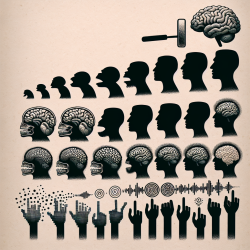Understanding the Overlapping Realities of Violence
The research article titled "Bridging the gaps: a global review of intersections of violence against women and violence against children" offers a comprehensive review of how violence against women (VAW) and violence against children (VAC) intersect. This intersection is not just a theoretical construct but a reality that practitioners in speech-language pathology and other fields must acknowledge to improve outcomes for children.
Key Intersections and Their Implications
The article identifies six key intersections:
- Shared risk factors
- Social norms that condone violence
- Co-occurrence within households
- Intergenerational effects
- Common consequences across the lifespan
- Intersection during adolescence
These intersections highlight the need for integrated approaches in addressing both VAW and VAC. For instance, shared risk factors such as social norms that condone violence suggest that interventions should target societal attitudes as much as individual behaviors.
Opportunities for Practitioners
For practitioners, understanding these intersections can guide more effective interventions. Here are some actionable steps:
- Integrated Early Interventions: Recognize the co-occurrence of VAW and VAC within households and implement early interventions that address both forms of violence simultaneously.
- School-Based Strategies: Develop and implement school-based programs that address both bullying and gender-based violence, incorporating lessons on gender equality.
- Adolescent Focus: Adolescence is a critical period for intervention. Programs should focus on preventing early marriage and unwanted pregnancies, which are risk factors for both VAW and VAC.
Encouraging Further Research
While the research provides a robust framework, there are still gaps that need to be addressed. Practitioners are encouraged to contribute to further research, particularly in low and middle-income countries where data is sparse. Areas needing more exploration include the cumulative effects of different forms of violence and effective prevention strategies across different settings.
Conclusion
The intersections between VAW and VAC are complex but offer opportunities for more effective interventions. By understanding these intersections, practitioners can contribute to better outcomes for children and women alike. The article encourages a collaborative approach, urging practitioners to work together across disciplines to address these pervasive issues.
To read the original research paper, please follow this link: Bridging the gaps: a global review of intersections of violence against women and violence against children.










